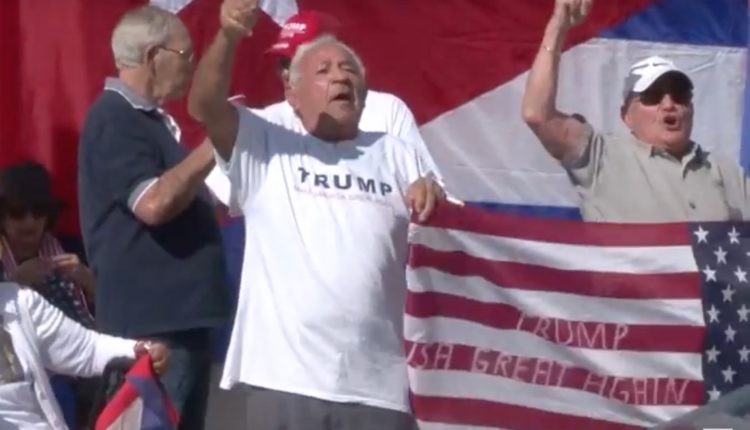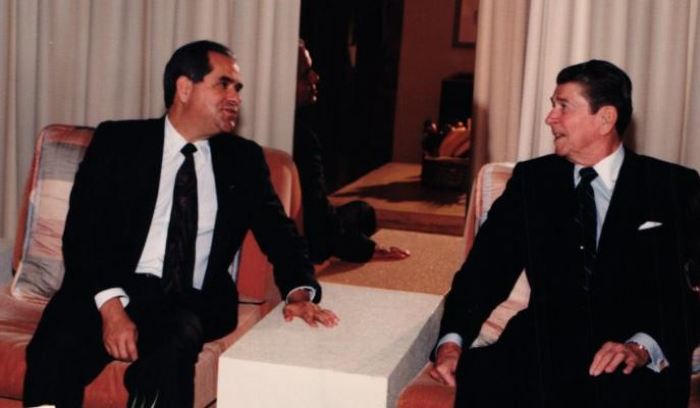
What is the Cuban-American right?
HAVANA – In one way or another, the term ‘Cuban-American right’ often emerges when talking about politics in the state of Florida, or about U.S. relations with Cuba, and even in many of the recent events in Latin America. Very few people, however, have a clear idea of what the term encompasses.
Its formation has its origin in the old Cuban oligarchy, and others close to it, when they began to lead the U.S.-sponsored counterrevolutionary movement against Cuba. In this sense it was made in the USA and it started from two basic premises: Recover what ‘they’ lost in Cuba and achieve this through the intervention of the .U.S government, which explains the restorative nature of its agenda to this day.
For the Cuban-American right, a peaceful transition to capitalism was never the plan; neither was the emergence of alternative political forces within Cuba. “That they return what belongs to me,” regardless of other consequences, is the slogan embodied in the Helms-Burton law.
Capital accumulated by persons in the United States before the revolutionary triumph, the possibility rendered to some who were well-prepared to take advantage of South Florida’s development and the expansion of North American business in Latin America — which included drug trafficking — as well the benefits derived from U.S. government ‘investments’ in the war against Cuba, made possible the economic foundation of Miami’s Cuban-American enclave, which found its main political representation in the Cuban-American right.
The social foundation of this force is the so-called ‘historical exiles,’ basically made up of Cubans who emigrated in the initial years after 1959, an bearers of an ideological matrix characterized by a furious opposition to the Cuban revolutionary process and anything, whether real or invented, that smelled of “communism.” This position has been constantly fueled by conservative American fundamentalism and the beneficial relationship that hostility against Cuba has meant for these groups.
Although not all came from the Cuban oligarchy and some experienced a difficult transition in the United States, it was an immigration particularly privileged by U.S. policy, which explains, along with other factors, the level of relative success seen in economic and social indicators of the Miami enclave. To the extent that these specific interests were developed on American soil, it was necessary to protect them through the politics, something that Cuban-Americans knew how to do thanks to the accelerated increase in their positions of power at the local level, as well as in their representation at the state and federal level.

The moment of consolidation for this process was Ronald Reagan’s triumph in 1980, and the creation of the Cuban American National Foundation (FNCA) in 1981. Although this organization emerged on the initiative of the CIA in order to generate support for the policy towards Cuba and Latin America, its president, Jorge Mas Canosa, shrewdly projected it in such a way as to gain political and administrative power at local and national levels, which also suited the Republicans.
Again, related to its counterrevolutionary function, the Cuban-American approach to American political life developed. But now they were transformed, no longer acting as Cubans, but as Americans, with aspirations within that system that surpasses policy towards Cuba, although this continues to be the pattern that defines them and guarantees both their monolithic position, as well as their visibility and influence in the American political debate.
The Cuban-American right is integrated throughout the conservative movement. In the case of the United States, particularly through the Republican Party, where they have achieved prominent activism, as well as in the various organizations created by the conservative lobby. On an international scale, through its historical association with the Latin American extreme right that it provides access and influence in American power structures.
Currently, given its relative strength in South Florida, Donald Trump needs their political force for his 2020 reelection plans. The role that some Cuban-American politicians play in Congress also matters, especially to counter the siege by Democrats against the president.
In exchange for this support, Trump has given them a significant role in the design and implementation of policy towards Latin America, which includes placing them in positions of power within the government bureaucracy that deals with this sector.
The true power of the Cuban-American right depends, initially, in keeping in tune with governmental interests. But even when this is not so, as was the case with the Obama administration, they always have the option of linking to a powerful opposition, a reflection of the polarization existing in the American political world.
Of course, its ability to mobilize votes and money in the Cuban-American community, its control of certain political and administrative structures in South Florida, as well as its position in the government apparatus and American civil society, also matter. Except for its governmental interests, where at least a fairly strong alliance with the Trump administration is apparent, in the rest of these fields there are significant setbacks as for the level of influence previously achieved by the Cuban-American right.
While at the end of the last century the levels of affiliation with the Republican agenda oscillated between 80 and 90 percent of the Cuban-American electorate, in the last few elections, their levels have dropped to around 50 percent. Their fundraising capacity has also decreased, and during the Obama administration the abandonment of their positions by important groups of Cuban-American businessmen was evident. In the 2018 midterm elections, the Cuban-American right in Florida lost two of the three seats it held in the U.S. Congress.
This corresponds to the demographic and generational trends observed in the Cuban-American community, as well as to the existence of economic interests with a view to the Cuban market. However, we have yet to see the consolidation of political forces that fully reflect these tendencies and act decisively against the agenda of the Cuban-American right. Therefore the Cuban American right continues to be the most powerful political force in the community and its existence remains highly functional for the Republican Party and the most extreme tendencies of the American conservative movement.
As a result, any change in U.S. policy toward Cuba, including any progressive movement in Latin America, will have to take into account the negative potential of this force and act accordingly.
There is no doubt that Miami is the capital of the Latin American right, inside and outside the United States, and it is up to Cuban-Americans to transform this reality. Hence the importance of what happens in that small region, known as Miami, where tourism is not the only thing of special interest.

